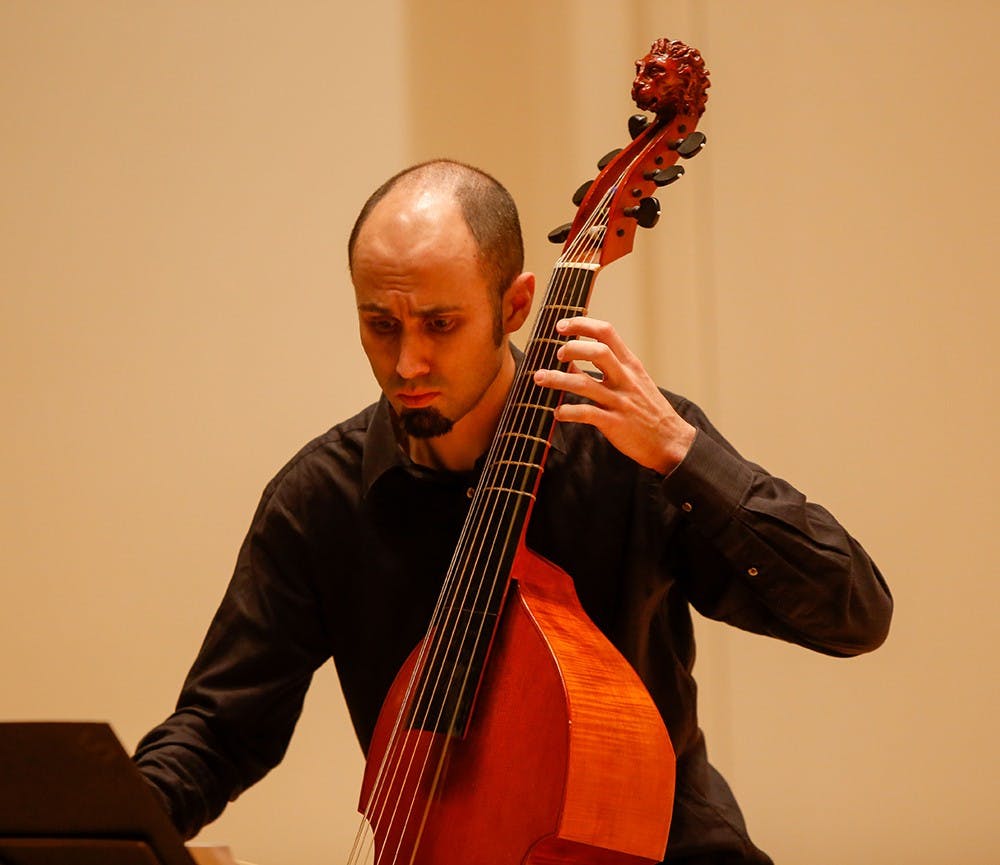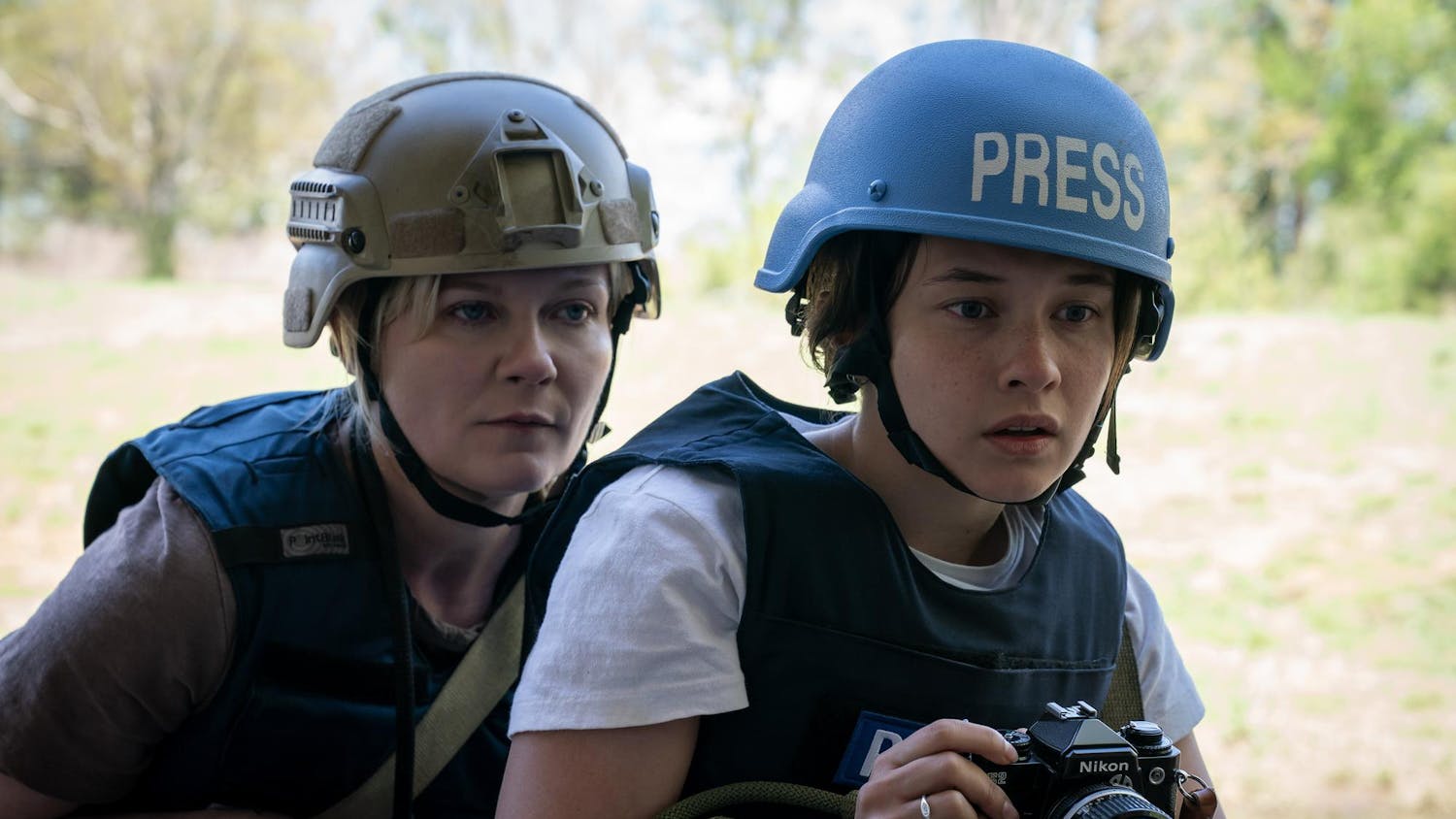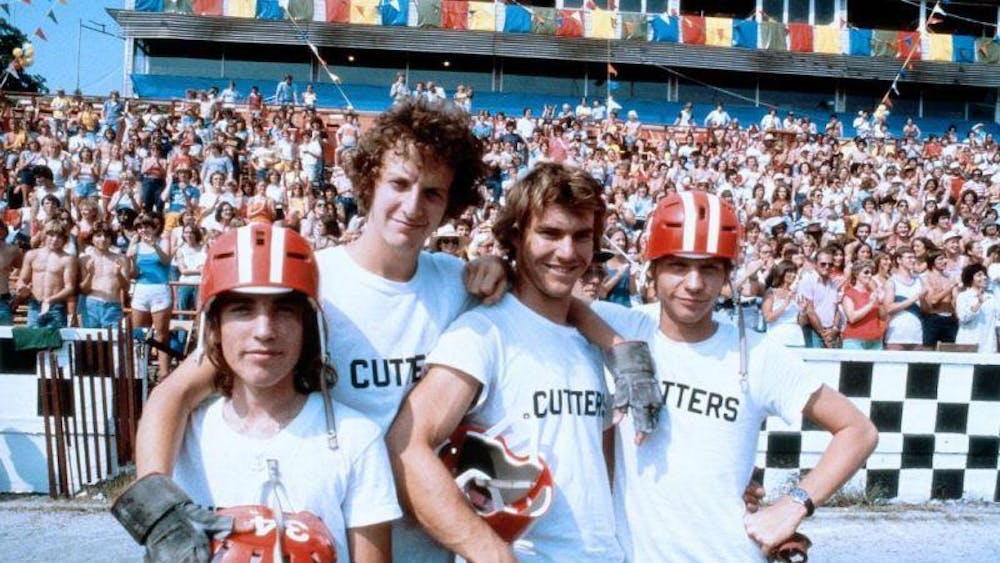Its form is similar to the cello, but its seven strings and the unusual way of holding the bow mark some of its differences.
English baroque cellist and violist da gamba, Robert Smith, brought this unusual instrument to Ford-Crawford Hall Thursday night. The performance, as well as a lecture, workshop and master class led by Smith earlier in the week were all part of the Five Friends Master Class Series.
The Five Friends Master Class Series was started in 2012 with a $1 million donation from the Georgina Joshi Foundation.
The purpose of the series is to honor the lives of five former music school students — Chris Carducci, Garth Eppley, Georgina Joshi, Zachary Novak and Robert Samels — through master classes, lectures, performances and more by top musicians and teachers. The events all focus on topics related to the five friends such as early music, voice performance, choral conducting, opera, music theory and composition.
Smith played through a diverse repertoire in the recital. He began with a composition by Marin Marais, who Smith described in the program notes as “arguably the most important composer for viola da gamba,” and ended with an anonymous piece titled “The Lancashire Pipes” for which Smith’s instrument was tuned to emulate the sound of bagpipes.
Wendy Gillespie, a professor of viola da gamba, historical performance and early notation at the music school, joined Smith on stage to play Christopher Simpson’s “Division in G Major.”
“I’m really glad I’ve had the opportunity to create a whole program of whatever I wanted,” he said to the crowd.
Smith chatted with the crowd frequently in between songs. While switching bows, he said there were no stylistic reasons for the change, he was just worried about breaking his already partly-broken bow. Later, while he changed the tuning of the viola da gamba for another anonymous composition titled “Jemmye,” he told the audience that the last time he tuned during a concert, he had broken a string.
Bloomington resident Linda Handelsman said she was drawn to the recital because she is a big fan of early music.
The music performed wasn’t limited to only early music, though. Smith also played an arrangement he put together himself of ?Metallica’s song, “One.” In the program notes he wrote that he created the arrangement for a wedding in which the couple wanted to find the middle ground between the groom’s love for guitar music and the bride’s preference for classical music.
Lucy Wortham, a first year graduate student in the music school’s Historical Performance Institute, said she came because she really enjoyed his workshop that she attended. Wortham said she had heard his master class was really good, as well.
“His personality really came through in the program he picked, which is really nice to see,” she said.
Another student in the Historical Performance Institute, Taylor Diclemente, said that the viola da gamba is making a revival through musicians like Smith. He compared the use of archaic instruments like the viola da gamba to historical re-enactments.
Despite being older, he said, the popularity of the viola da gamba was eventually surpassed by the cello because cellos can be louder.
“It’s like storytelling, in a sense,” Diclemente said. “You can captivate without bellowing at the top of your lungs.”






